Bachelor's and Master's projects
Background

Sediment disturbance caused by the contact of bottom trawling gear with the seafloor has the capacity of releasing previously-sequestered sedimentary organic carbon (OC) from the seafloor 1–4. Global models have estimated that bottom trawling could be releasing between 0.2-0.4 Pg·C·yr-1, hampering the capacity of the seafloor of locking away large amounts of OC from the active carbon cycle 5. However, the magnitude of these impacts are highly contested 6–9. This debate is partly due to the different impacts that bottom trawling can have on OC: bottom trawling can resuspend sediment and its associated OC, or enhance its mineralization by oxygenating the sediment layers (Fig. 1).
Method
In August 2024, we collected sediment cores in impacted and control sites to determine the amount of OC that is removed from fishing grounds through erosion and remineralization.
Your tasks:
- Analyze OC content, mineral surface area, δ13C, Δ14C, and 210Pb in these sediment cores.
- Quantify the amount of eroded sediment due to trawling from 210Pb profiles.
- Determine OC stocks in impact and control sites from OC and 210Pb profiles.
- Identify changes in the OC loading in impact and control sites from OC and mineral surface area.
- Identify variations in the OC isotopic composition due to bottom trawling.
- Identify the composition of OC that is preferentially degraded using OC isotopes and mineral surface area.
Publications
- Paradis, S. et al. Organic matter contents and degradation in a highly trawled area during fresh particle inputs (Gulf of Castellammare, southwestern Mediterranean). Biogeosciences 16, 4307–4320 (2019).
- Paradis, S. et al. Persistence of Biogeochemical Alterations of Deep‐Sea Sediments by Bottom Trawling. Geophys. Res. Lett. 48, (2021).
- Tiano, J. C. et al. Acute impacts of bottom trawl gears on benthic metabolism and nutrient cycling. ICES J. Mar. Sci. (2019) doi:10.1093/icesjms/fsz060.
- Morys, C., Brüchert, V. & Bradshaw, C. Impacts of bottom trawling on benthic biogeochemistry in muddy sediments: Removal of surface sediment using an experimental field study. Mar. Environ. Res. 169, 105384 (2021).
- Sala, E. et al. Protecting the global ocean for biodiversity, food and climate. Nature 592, 397–402 (2021).
- Epstein, G., Middelburg, J. J., Hawkins, J. P., Norris, C. R. & Roberts, C. M. The impact of mobile demersal fishing on carbon storage in seabed sediments. Glob. Chang. Biol. 28, 2875–2894 (2022).
- Paradis, S. et al. Demersal fishery Impacts on Sedimentary Organic Matter (DISOM): a global harmonized database of studies assessing the impacts of demersal fisheries on sediment biogeochemistry. Earth Syst. Sci. Data 16, 3547–3563 (2024).
- Tiano, J. et al. Global meta‐analysis of demersal fishing impacts on organic carbon and associated biogeochemistry. Fish Fish. (2024) doi:10.1111/faf.12855.
- Hiddink, J. G. et al. Quantifying the carbon benefits of ending bottom trawling. Nature 617, E1–E2 (2023).
Contact
- Dr. Sarah Paradis
Master's project: Mineral-associated allochthonous organic matter input into Swiss lakes through flood events
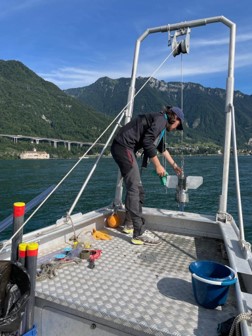
Background
Flood layers in Swiss lakes transport terrestrial material, containing relatively more allochthonous OM than regular discharge (e.g. Fuentes et al., 2013, Limnologica 43). We observed a trend of more depleted Δ14C towards the top of a major flood in Lake Constance, i.e., finer material contains older OC.
In the same flood layer, fatty acid concentration increased from the bottom to the top half. This could be interpreted as the effect of more effective organic matter stabilization by clay minerals (which are enriched in the finer fraction).
Questions
How does grain size and mineralogy of event layers vary from bottom to top?
How do associated bulk OC isotopes vary?
What is the nature of the organic matter, does it change through the flood layers?
Are there correlations of grain size or mineralogy with OC ages? Are there spatio-temporal trends in these relationships?
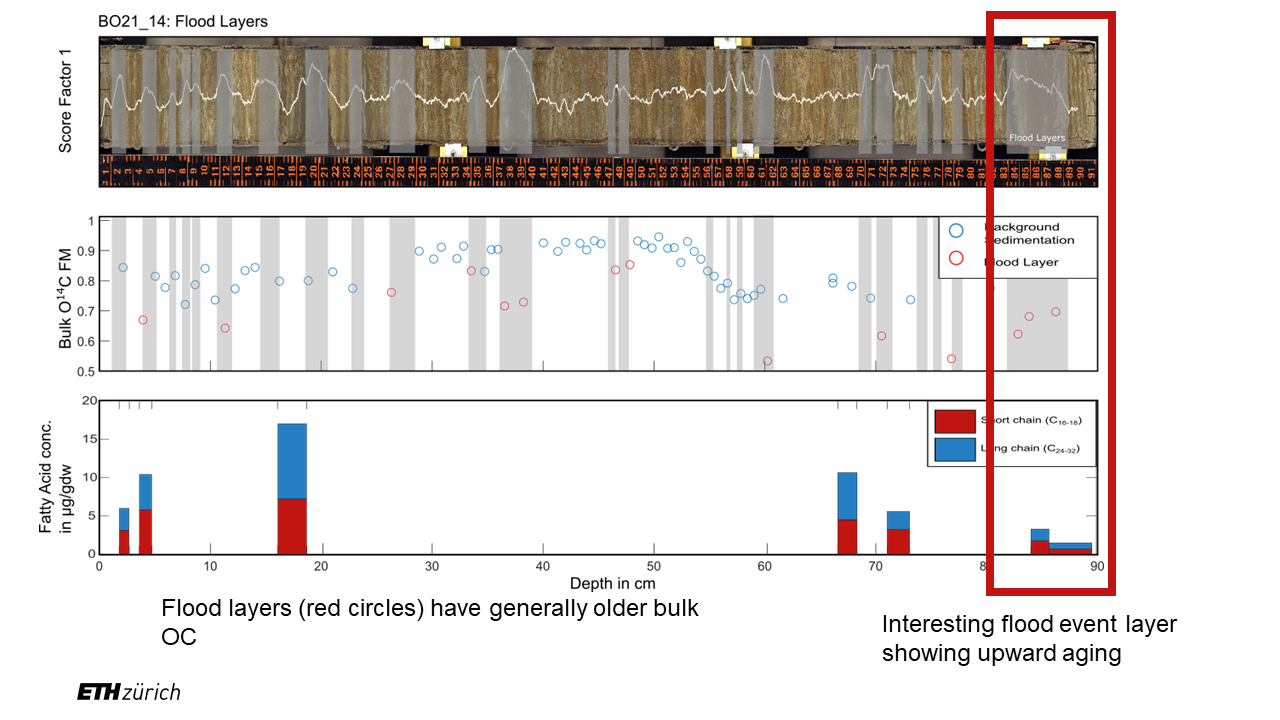
Methods
- Grain Size measurements, using the laser particle sizer
- XRD measurements to identify mineralogy
- Bulk O14C, δ13C
- Specific-surface area?
- C:N ratio?
- Lipid extractions
Which Samples?
Either existing cores, that were sampled for a previous campaign, or newly acquired material from Lake Constance, Lake Geneva or Lake Maggiore.
Contact
- Benedict Mittelbach
- Dr. Thomas Blattmann
Master's project: Locating organic carbon hotspots in marine sediments from the Namibian margin using spatial machine learning algorithms
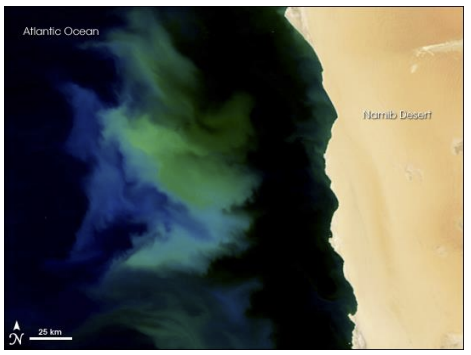
Project Background
The Namibian margin stores large amounts of organic carbon in its marine sediments, as a result of the upwelling of cold and nutrient-rich waters to the surface that fuel high marine productivity and sustains a proliferous fishing industry in this margin. High concentrations of organic carbon leads to rapid oxygen consumption and the formation of oxygen minimum zones, enhancing the preservation of fresh organic carbon in marine sediments. However, this preservation could be counteracted by chronic sediment disturbance caused by the widespread bottom trawling activities that occurs along the margin, whose influence hasn’t been accounted yet in this margin.
Project aims
The aim of this project is to locate hotspots of organic carbon content and sites of fresh and reactive organic carbon or aged and refractory organic carbon in marine surface sediments in the Namibian margin. In addition, spatial machine learning techniques will be used to identify the factors that affect the distribution of organic carbon content and its reactivity, in order to predict sites of enhanced organic carbon storage and its vulnerability to anthropogenic disturbance. To achieve these objectives, the student will perform laboratory analyses of marine sediments collected during several cruises, as well as extract data from the Modern Ocean Sediment Archive and Inventory of Carbon (MOSAIC) database. Spatial analyses coupled with machine learning algorithms will be employed to identify the factors that mostly influence the distribution of both organic carbon content and its age along the margin. Depending on the student’s motivation and time-constraints, additional analyses may be performed to better constrain the source of organic carbon in marine sediments.
Through this project, the student will combine a set of valuable skills such as performing analyses in a laboratory, programming, and running spatial analyses. Participation to the ongoing Regional research Graduate Network in Oceanography (RGNO) seminar series is highly recommended to gain a holistic view of the environmental factors that affect the Namibian margin.
Contact
- Dr. Sarah Paradis
- Prof. em. Dr. Timothy Eglinton
Master's project: Exploring sulfuric acid weathering of kerogen
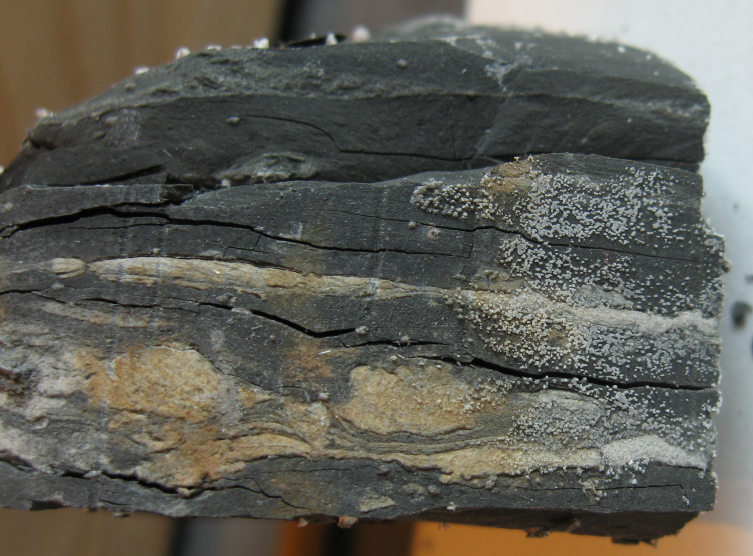
Kerogen exposed on Earth’s surface is subject to decay via oxidation and microbes exerting a fundamental control on the abundance of carbon dioxide and oxygen in Earth’s atmosphere over geologic time. Recent work has shown the importance of sulfuric acid on the decay of minerals including carbonates and silicates. Sulfuric acid commonly evolves from the oxidation of sulfides such as pyrite during weathering processes on Earth’s surface. However, sulfuric acid is a strong oxidant and no examinations have been carried out on the effect of sulfuric acid on kerogen. Results from such a study would provide first-order inight into the biogeochemical relevance of sulfuric acid weathering of kerogen. The student would design laboratory approaches, select samples (with possible fieldwork) to investigate this entirely new area of research.
This project can be executed as a master project.
Contact
- Dr. Thomas Blattmann
Master's project: Tracing carbonate minerals in sediments using radiocarbon
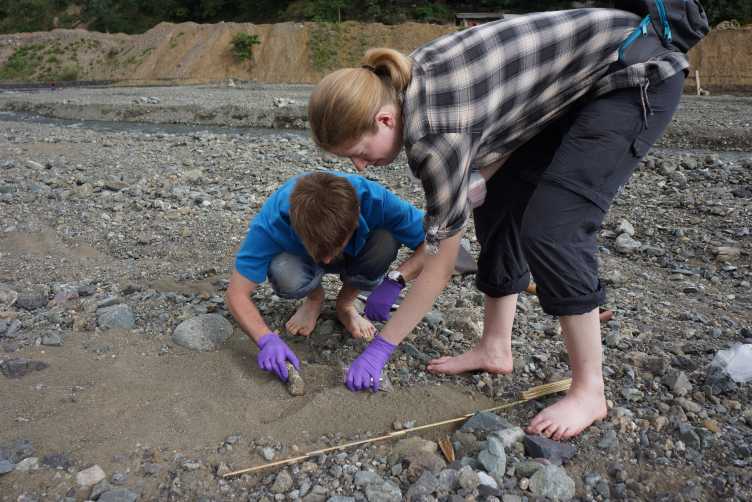
Carbonates are minerals that include carbon in their structure. This inorganic form of carbon is ubquitous across Earth’s surface. Carbonates may either be of lithogenic origin such as from limestone or stem from modern precipates via either abiotic or biomineralization pathways. Using radiocarbon, the student will explore an entirely novel way of tracing the source-to-sink fate of carbonates in the environment. Samples from Lake Constance are ready to test this new tool and provide quantitative insight into the sedimentology of carbonates and explore what implications this has for global biogeochemical cycles.
Depending on the candidate, this project can be executed as a semester project, bachelor project, or expanded into a master's project.
Contact
- Dr. Thomas Blattmann
Master’s project:
Pathways of dissolved organic carbon through terrestrial and aquatic ecosystems in Switzerland
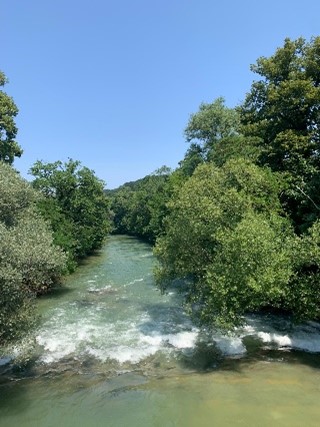
Supervisors: Margot White, Luisa Minich, Timo Rhyner, Timothy Eglinton
Background
Dissolved organic carbon (DOC) is a major component of the global carbon cycle and transfers carbon from soils to groundwater aquifers, rivers, and lakes. On its pathway from the terrestrial to the aquatic domain, DOC composition is altered by various processes including microbial decomposition, particle interactions, and photochemical reactions. Radiocarbon (14C), the long-lived radioactive isotope of carbon, is unique in its potential to quantify the magnitude and pace of carbon exchange among carbon reservoirs. 14C and 13C signatures in bulk DOC as well as in components of the DOC pool help to elucidate the sources of this carbon and to distinguish between slow-cycling and fast-cycling pools.
Description of the Master’s project
The objective of this Master’s project is the identification of specific DOC fractions that help to link DOC reservoirs. The student will work with soil solution samples from Swiss forest sites as well as water samples from Swiss rivers, groundwater, and lakes. The student will test and implement different DOC fractionation approaches (i.e. Solid Phase Extraction, Size Exclusion Chromatography, UV oxidation) to identify fractions that would link DOC across terrestrial and aquatic ecosystems. Isotopic analysis (13C, 14C) will be performed in subsequent DOC fractions. The radiocarbon dating of each fraction will elucidate the age distribution of DOC sources in different DOC pools from the terrestrial to the aquatic domain.
Field work
The student will have the possibility to join field trips across Switzerland to sample water from Swiss river systems, groundwater aquifers, and lakes.
Methodology
- Optical measurements of DOM (e.g., colored and fluorescent properties)
- DOC fractionation using Solid Phase Extraction (SPE), Size Exclusion Chromatography (SEC), and/or UV oxidation
Contact
- Margot White
- Luisa Minich


Mackenzie Delta Lake sediments – Records of recent permafrost thaw?
Project background
The Mackenzie River in Northwest Canada is the largest sediment source to the Arctic Ocean. Accelerated warming in the Arctic is expected to lead to increasing organic matter export from thawing permafrost soils with unknown feedbacks to climate and downstream ecosystems.
Project aims
In this project, you will characterize the material transported by the Mackenzie River using delta sediment cores as archives in order to determine whether the materials discharged by the Mackenzie River and its tributaries have responded to recent climatic change, and in particular to seek evidence for mobilization of the vast stores of carbon held in permafrost within the watershed. We aim to collect short sediment cores (<1 m) from ~15 lakes throughout the Mackenzie delta in spring 2021 (tentative dates in early April). Potential analyses include sediment properties (bulk density, grain size distribution, mineral surface area and elemental composition, 143Nd/144Nd isotopes) to elucidate sediment characteristics, as well as bulk elemental and isotopic (% organic carbon, % total nitrogen, δ13C, Δ14C) and molecular organic geochemistry, specifically employing different terrestrial and aquatic biomarkers in order to assess quality, age, origin and degradation of the sedimentary organic matter.
Contact
- Dr. Lisa Bröder
- Prof. em. Dr. Timothy Eglinton